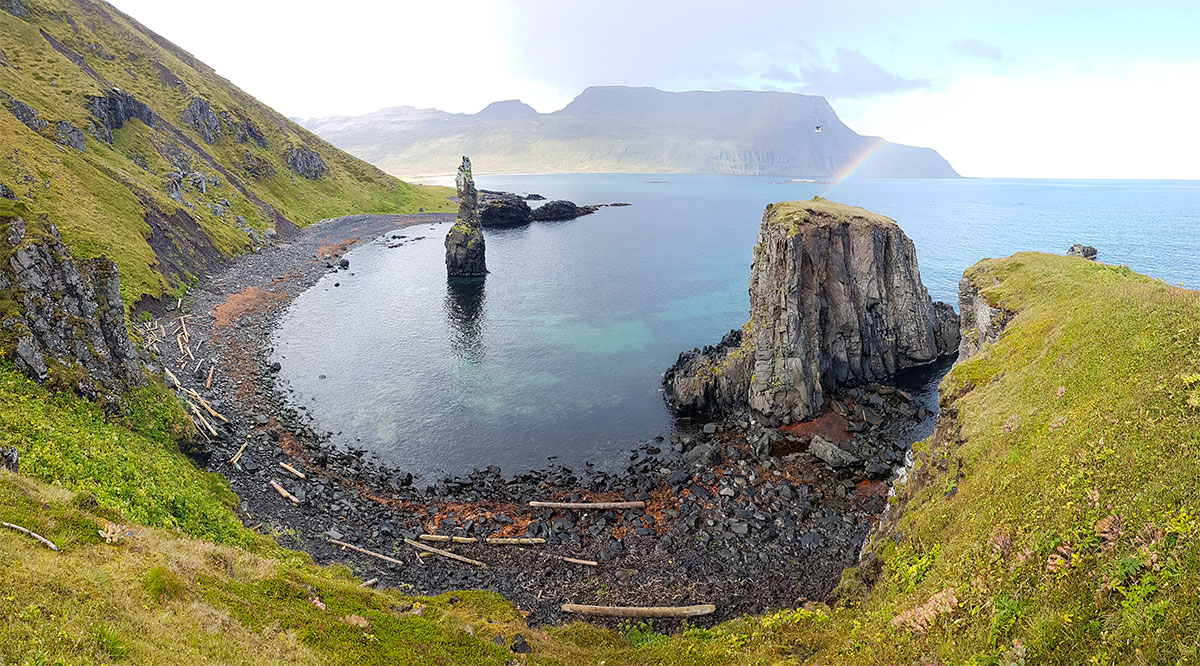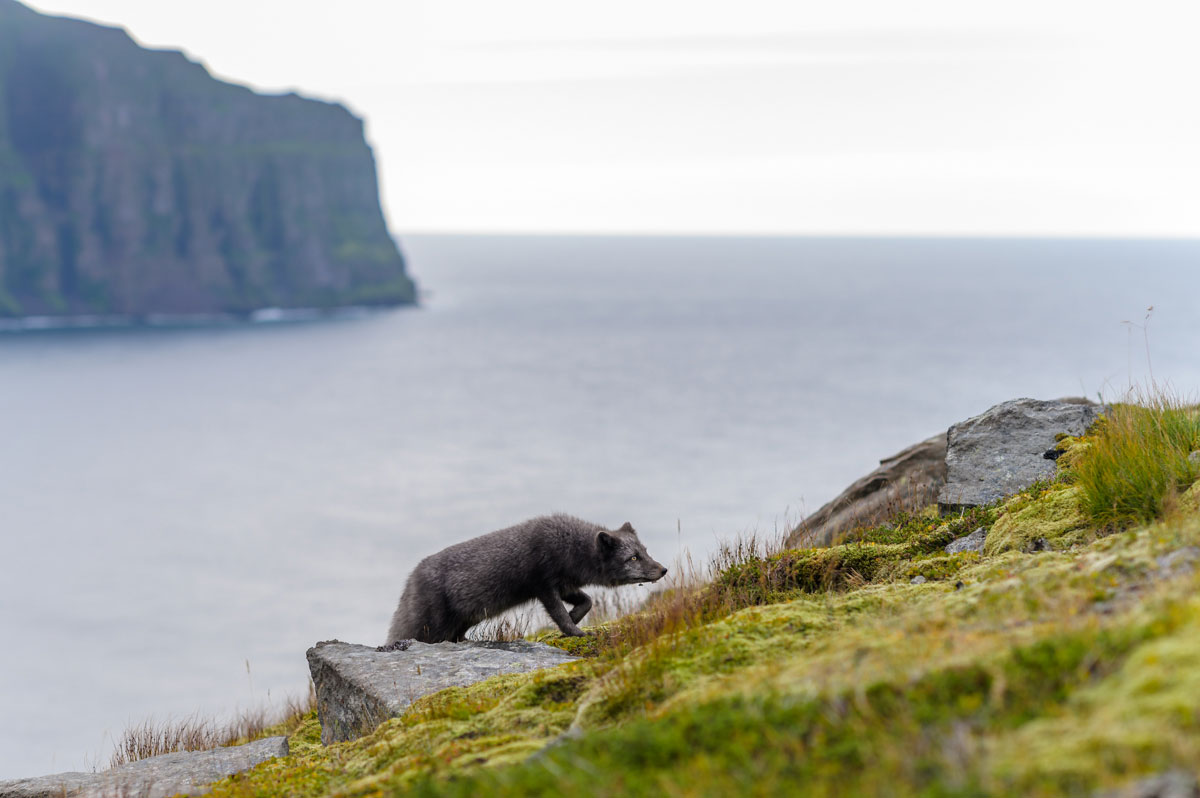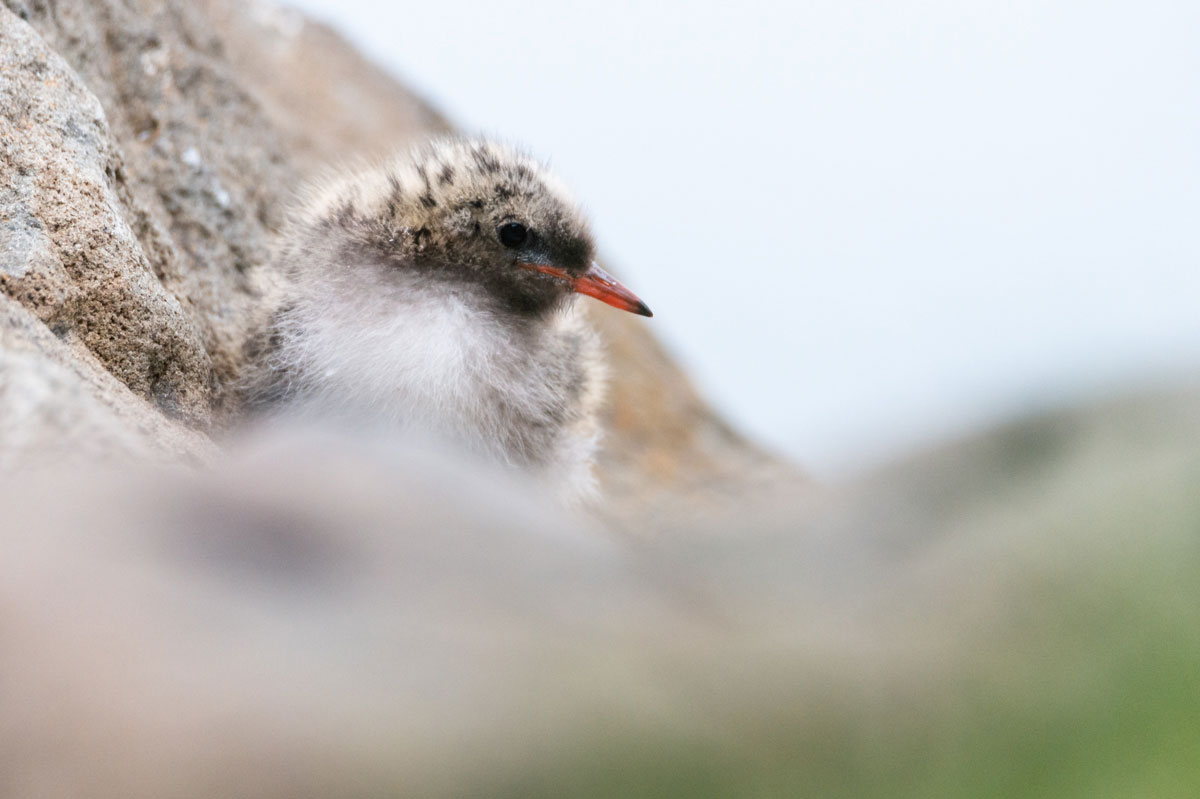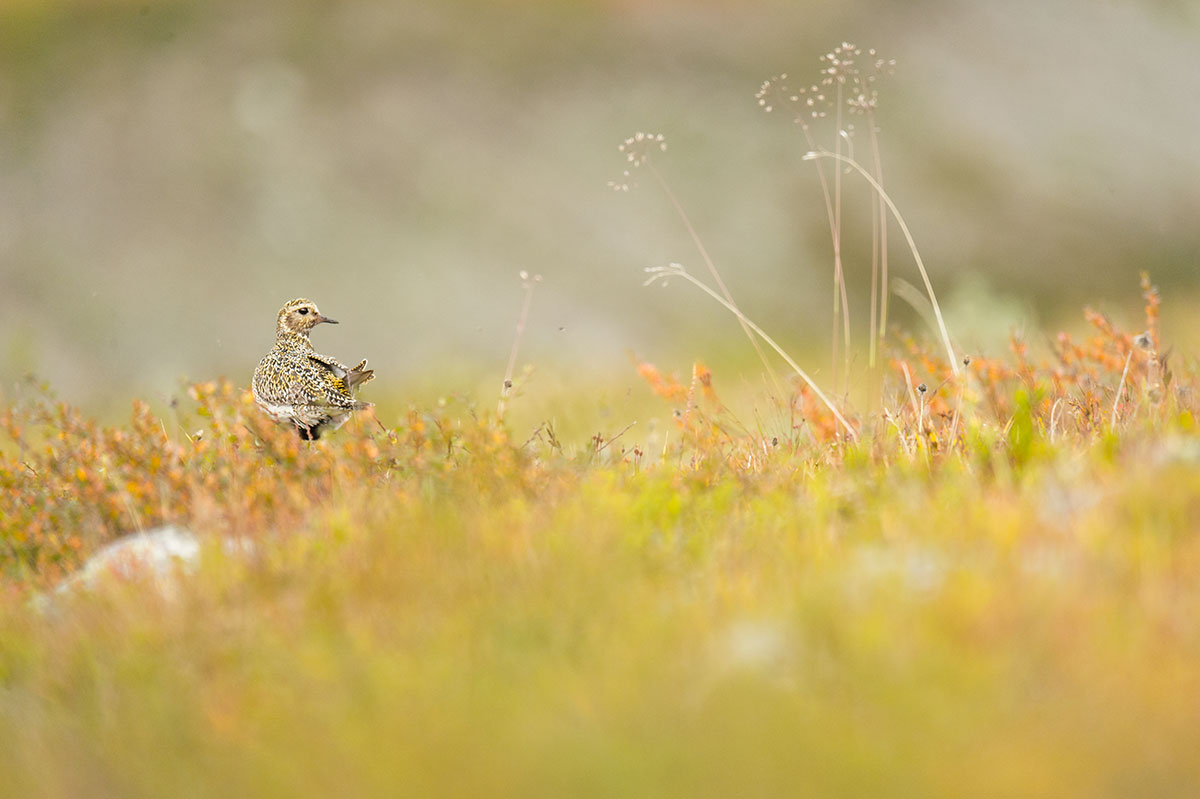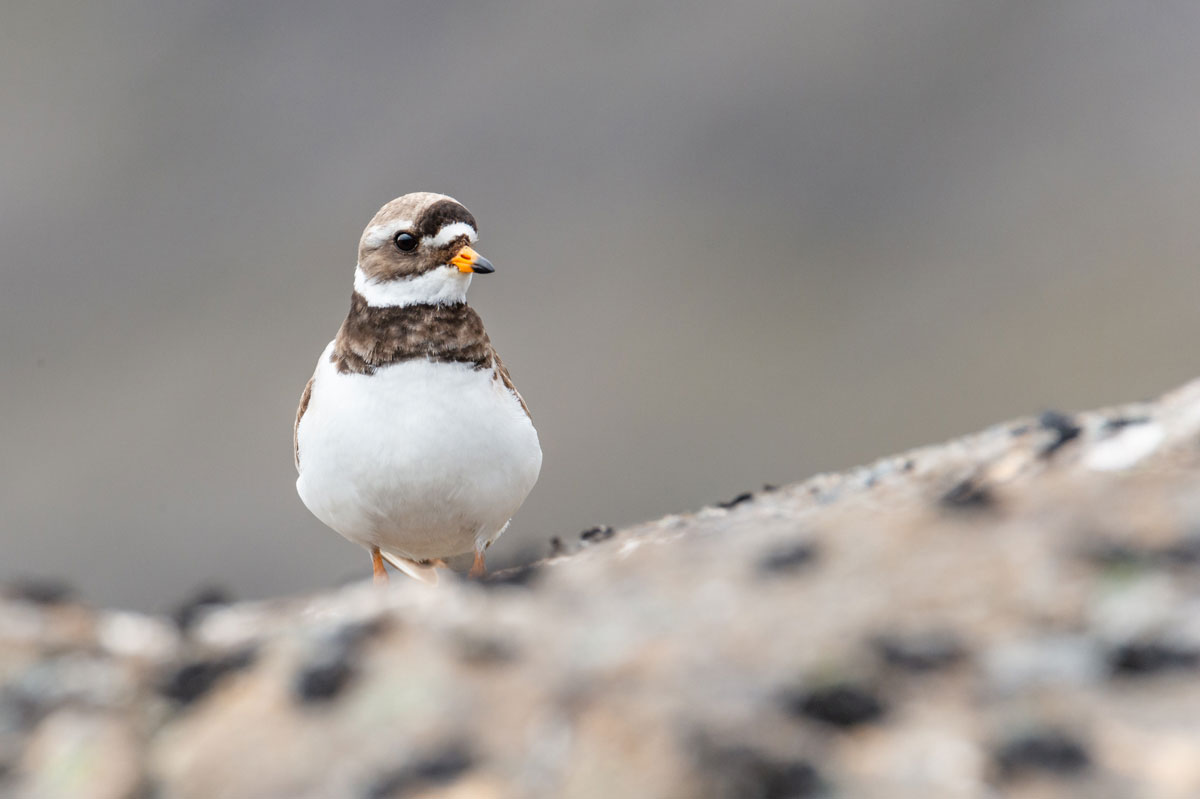Hornstrandir Nature Reserve – The complete guide
- 1 Hornstrandir nature reserve
- 2 The reserve’s geographical situation
- 3 How to get to Hornstrandir: the ferry
- 4 Trekking in Hornstrandir
- 5 Hornstrandir’s wildlife
- 6 The ghosts of Hesteyri
- 7 Conclusion
The first time I jumped out of a zodiac to set foot in the Hornstrandir nature reserve, it was raining buckets! The welcome lived up to the reputation of this peninsula lost in Iceland’s oldest lands. I might as well tell you right away that I wasn’t feeling serene. Firstly because I was alone on the ferry that dropped me off there, and secondly because this was my first real self-sufficient trip.
I was used to extreme conditions, sleeping outdoors and eating oats and couscous every day. But living in such an isolated land was a new stage for me, especially by being self-sufficient. This experience began with 24 hours in a tent waiting for the rain to stop!
Today I can tell you about Hornstrandir because I’ve spent a lot of time there as a photographer, but also because I work there as a hiking and photo guide. I’ve had some of my best moments in nature there, but also some of the worst, when nature is relentless and puts you back in your place as a small mammal.
If you’re planning to visit Hornstrandir Nature Reserve to hike, photograph polar foxes or watch seabirds, then read this post to the end, where I cover everything you need to know about the subject!
Hornstrandir nature reserve
Hornstrandir is a nature reserve located in the Westfjords of Iceland (Vestfirðir). It’s a peninsula that is very difficult to access. There are no roads leading to it, and humans deserted the area in the 1950s.
I’ve often wondered how human populations managed to live in such a hostile place! The peninsula is cut off from the rest of Iceland, and exposed to powerful polar winds.
The last village to be evacuated was Hesteyri, on the south side of the peninsula.
Today, 8 houses still exist in this village. They have been converted into vacation homes. If you visit this fjord, don’t hesitate to go to the very end: the chimney of an old Norwegian whaling station still stands amidst the ruins.
The reserve takes its name from the horn on the northern face of the peninsula and the Strandir region. This horn punctuates Hornvik Bay, which Icelanders say is the most beautiful landscape in the world. The impressive 500m-high cliffs are home to millions of seabirds. I spent several weeks observing polar foxes hunting on the Hornvik cliffs, and I can tell you that the panorama during the midnight sun is breathtaking!
The reserve’s geographical situation
Before telling you about my experience, let’s take a look at the region’s geography and geology. The Hornstrandir reserve is located at the northernmost tip of the Wesfjords. It forms a natural rampart that protects Westfjords villages such as Ísafjörður, Súðavík and Bolungarvik from north and northeast winds.
The land in this region is Iceland’s oldest, as it is furthest from the Mid-Atlantic Ridge (which separates the North American plate from the Eurasian plate), from which new land is created. That’s right, Iceland expands by 2cm every year, thanks to or because of the separation between these two plates.
Hornstrandir is made up of a succession of fjords to the south and bays to the north. These formations were carved out by glaciers during the last ice age, then subjected to winds and erosion. Nature created this place using ice, water and wind. Today, ice in winter, and water and wind in summer, continue to sculpt the reserve.
Iceland is a stone’s throw from Greenland. Weather permitting, it’s possible to see the Greenland coast (less than 300 km from Hornstrandir) from the cliffs of Hornvik. The snow-capped mountains of Greenland’s east coast appear like a mirage all along the horizon.
South of Hornstrandir, the presence of the Drangajökull glacier increases the peninsula’s isolation by preventing any land connections. This makes it impossible to use a land vehicle, even in an emergency.
I’m lucky enough to cross this glacier every year as a guide. From its summit, you can see the bay of Reykjarfjörður, the black basalt peaks emerging from the ice and a silent, snowy immensity. An experience bordering on the spiritual 🙂
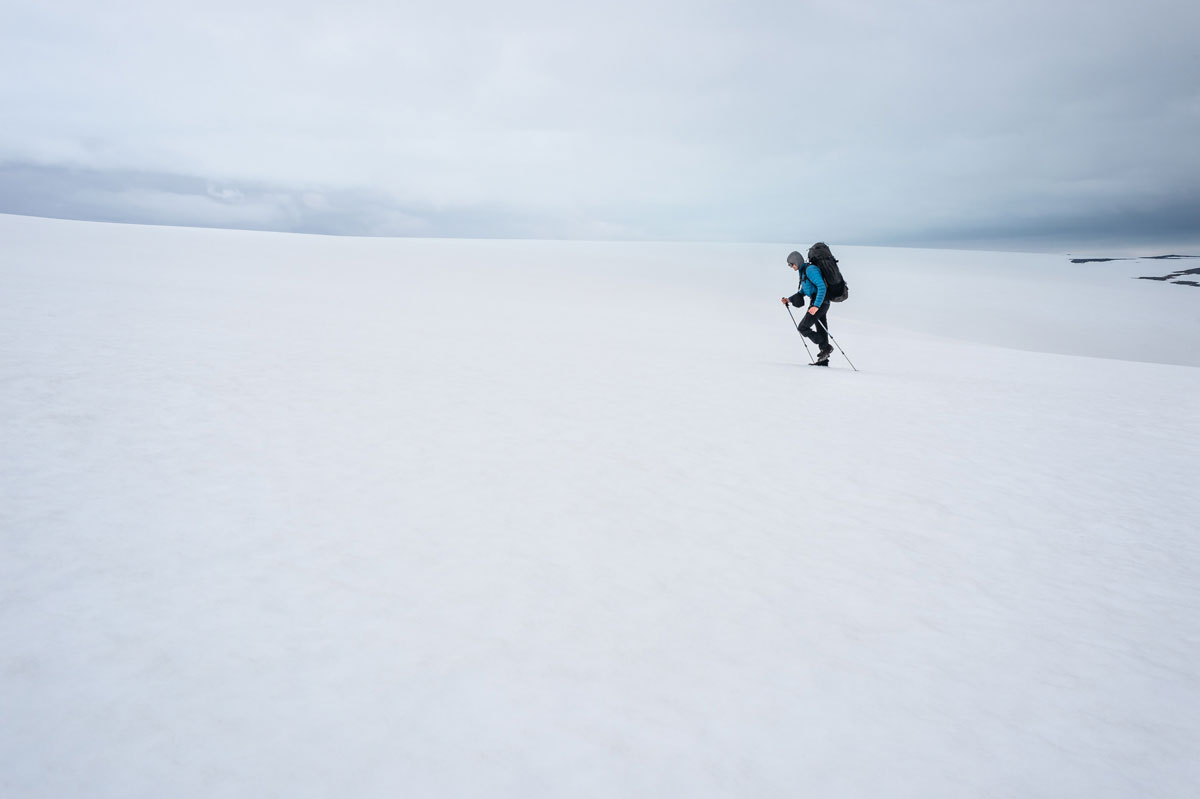
How to get to Hornstrandir: the ferry
As you can see, there is only one way to get to Hornstrandir: you’ll have to take the ferry.
During the summer months, there are daily crossings. All you need to do is book your place with one of the three companies offering ferry services to Hornstrandir:
I advise you to book your return journey at the same time. Mobile network is scarce in Hornstrandir, so it’s best to know your return day and time in advance. If you absolutely need a mobile network, you can contact us, and I’ll give you the exact locations of where to find one.
Once in the reserve, your only means of locomotion is obviously your legs. I’d like to take this opportunity to tell you that the terrain is very challenging. If you’re used to hiking in Europe, even in the mountains, the level of difficulty is much higher. Stones, swamps, steep slopes… everything is there (thanks to the glaciers) to make hiking in Hornstrandir a high-level sporting activity!
The local joke is to add “icelandic” to any distance measurement (for example, icelandic 10 kilometers).
The two cheapest ferry destinations (because they’re close by) are Hesteyri and Veiðileysufjörður (yes, after a few tongue cramps, you can manage to pronounce the name of this fjord!).
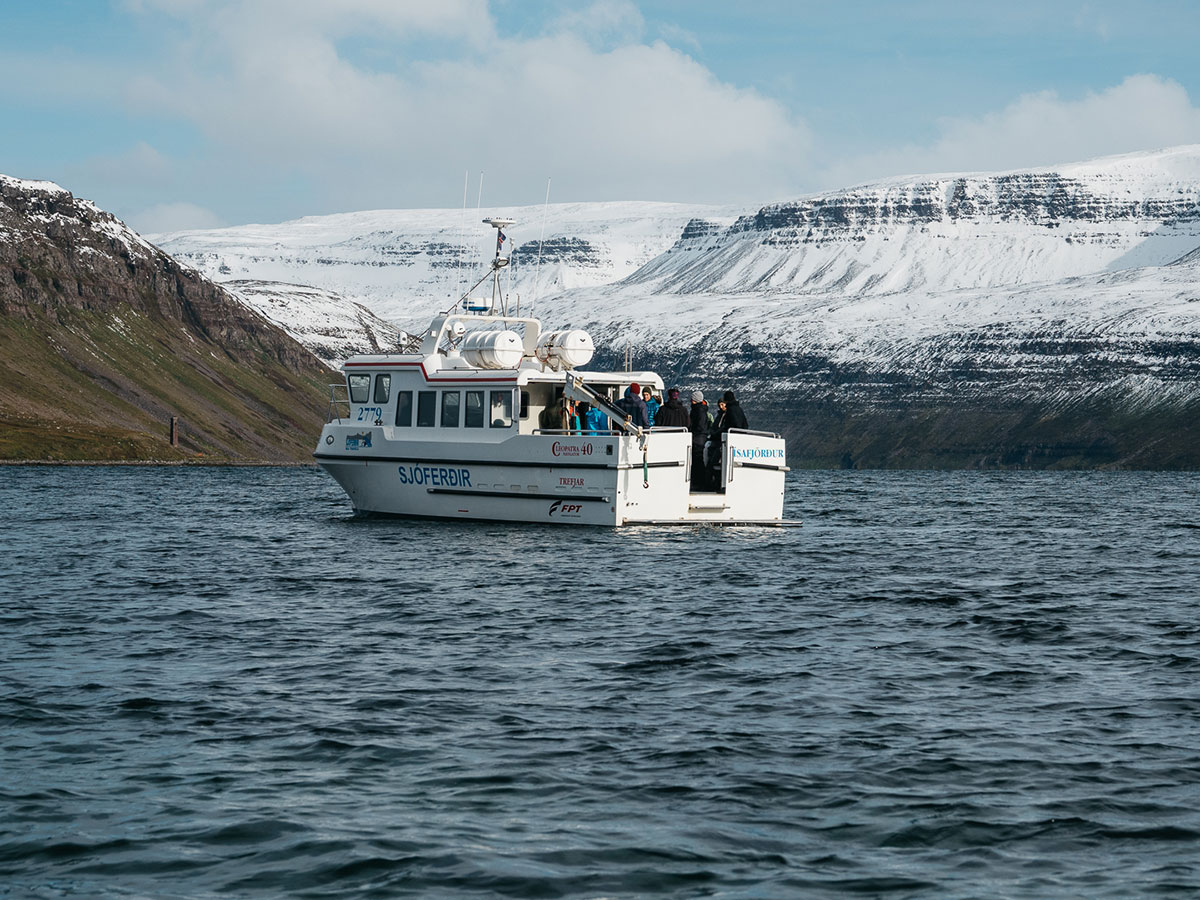
Trekking in Hornstrandir
When to go?
Hornstrandir in summer
Summer is the beautiful season in the Hornstrandir nature reserve. But it’s all relative, we’re talking about Iceland’s Westfjords, and the climate here is highly unpredictable, even in the middle of July.
In summer, it’s polar day at Hornstrandir. The Arctic Circle is only a few kilometers away, and from June 21 onwards, you can witness breathtaking sunsets. The lights are sublime and time seems to stand still. Taking an evening stroll and enjoying the tranquility of the surroundings, coming across a polar fox or seeing a humpback whale in the distance, is a privilege few people have ever had.
Summer in the reserve can be dry or wet. But more often than not, as in Brittany or Ireland, the weather is highly variable. Fine days follow rainy or foggy ones. Each day creates its own atmosphere. Temperatures can vary from 0 to 15 degrees. Exceptionally (in Icelandic memory), they can reach 20 degrees. But, to be honest, I’ve never experienced it.
In short, the summer months (July and August) are the mildest in Hornstrandir nature reserve, but be careful all the same!

Hornstrandir in autumn
At the end of August, the reserve empties. And in early September, autumn sets in, temperatures plummet and the tourist season draws to a close. The tundra puts on its red coat and the blueberries, of which there are plenty in the area, are ready to be picked. But with autumn also comes storm season. As the month progresses, conditions become increasingly difficult. However, ferry services continue until September 14. Personally, I highly recommend taking a guided tour if you want to venture into the reserve out of season. On many occasions, I have come across people in difficulty in the reserve (lack of food, lack of information about storms, falls into rivers, etc.), so please be careful!
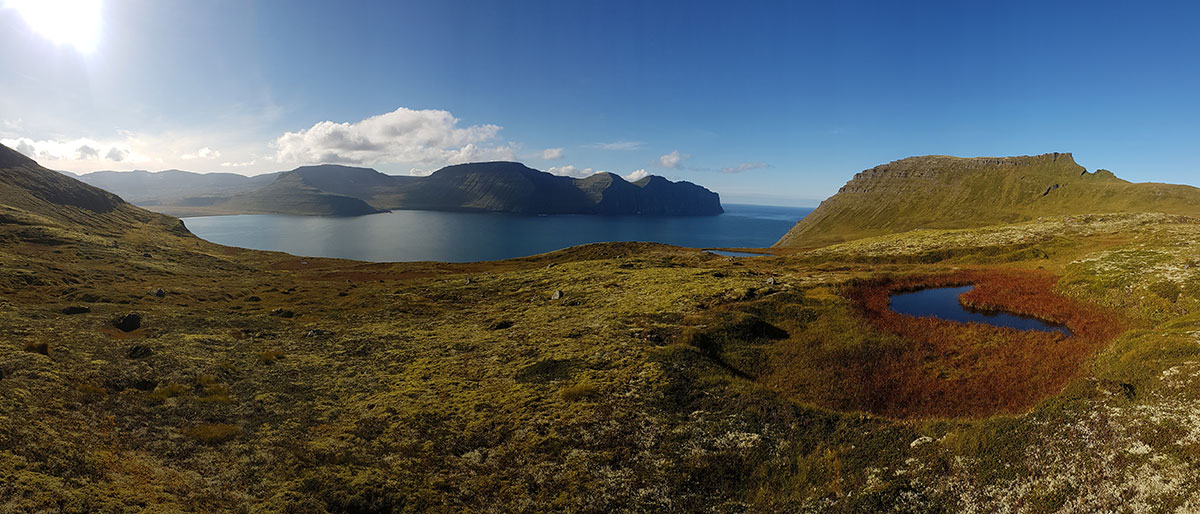
Hornstrandir in winter
If you’re not used to extreme and dangerous conditions, there’s no point in considering any season other than summer in Hornstrandir. Winter here is Arctic. Even for Icelanders, life on the reserve is impossible.
From the beginning of September, all connections are interrupted. It’s no longer possible to reach Hornstrandir by conventional ferry. However, if you’re a photographer or filmmaker, and you’d like to work on the Hornstrandir reserve in winter, then there are solutions. For example, you can contact Wildlife Photo Travel to arrange for someone to accompany you.
The Hornstrandir reserve is particularly snowy in winter, much more so than the rest of the Westfjords. In fact, the reserve is a bulwark that protects the towns of the Westfjords from the north and northeast winds. You only have to stand in front of the reserve from the town of Ísafjörður to realize the difference in snow cover.
Another important fact: winds and fog are practically permanent. No bivouac equipment other than that designed for the Arctic can withstand these conditions.
Finally, there’s not a living soul on the reserve in winter. If you’re lucky enough to set foot here in February or March, you’ll probably be alone!
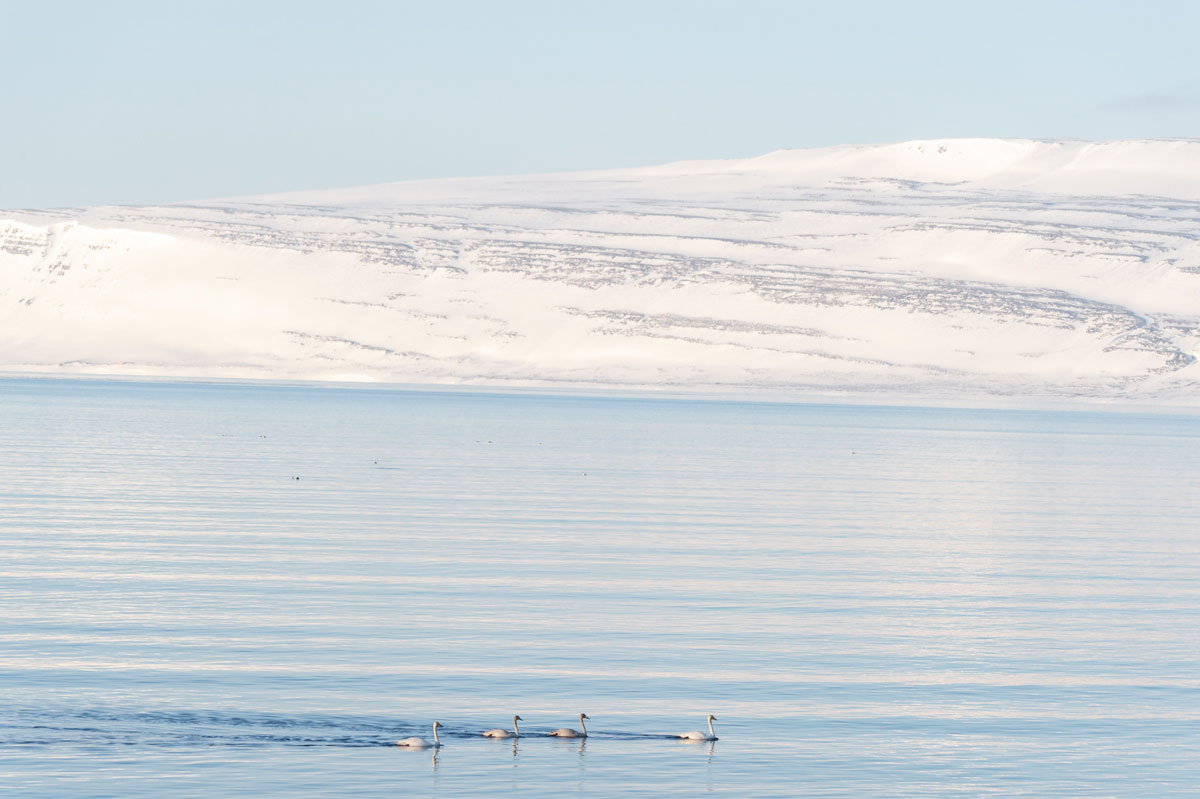
Hiking routes in Hornstrandir
There are official hiking trails in the Hornstrandir nature reserve. These paths link the camps together. I don’t recommend going off these paths, as off-trail hiking is very difficult, if not impossible. It should also be said that by using these routes, you preserve the reserve’s flora, which is unique in Iceland, as it is preserved from farm animals.
There are many maps of Hornstrandir nature reserve, which you can buy at the ranger’s office in Ísafjörður (Hornstrandir Visitor Center).
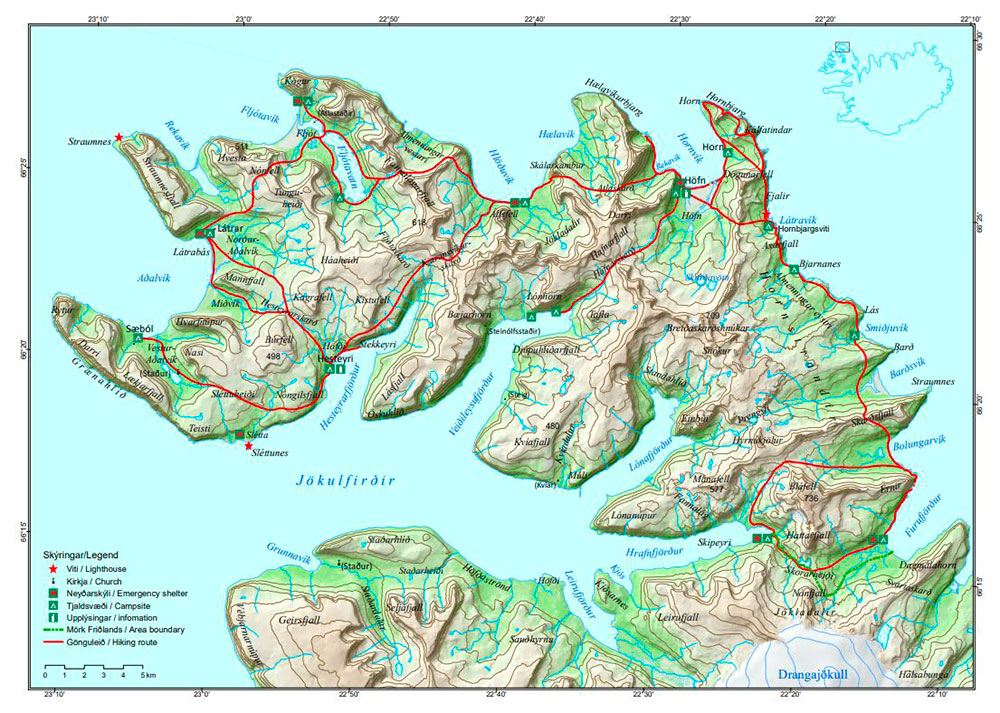
If you’re used to digital maps, then I highly recommend the OsmAnd (Open Street Map) app. This app, which allows you to download maps for use off the grid, has served me well since 2018, and I even use it in the Sahara.
Using it during your hike, you can point out points of interest, associate locations with photos and prepare your routes in advance. But the main benefit of this app is that you always know where you are. It’s impossible to get lost in these conditions, even in the middle of a desert.
Camping in Hornstrandir : self-sufficient trekking
If you’re hiking in Hornstrandir, you’ll have no choice but to bivouac. There are two hostels in the reserve, but they’re several days’ walk away. So you’ll have to carry all your bivouac gear, but I’ll talk about that later.
What you need to know first is that camping in Hornstrandir is forbidden outside the campsites, except in emergencies. And the reserve’s rangers will be there to make sure this rule is respected!
You’ll have to walk between 10km and 18km a day to reach the next camp.
Emergency cabins
Some emergency huts have been made available to hikers, but only in case of emergency. These huts look like fluorescent-orange flying saucers, and are visible from far away, so you can’t miss them. The most important are those at Hornvik and Hlöðuvík, as these two camps face due north and are difficult to shelter in stormy weather.
In October 2023, during a guided trip, we had an emergency with two people in the group. One was in hypothermia, the other in a state of panic due to exhaustion. When I tried to shelter them (and keep them warm) in an emergency hut, I discovered that some equipment had been left in the refuge. I had to move this equipment in a hurry, which took me a good half-hour.
If you’re not in an emergency situation, then you should leave these shelters free, as others may need them.
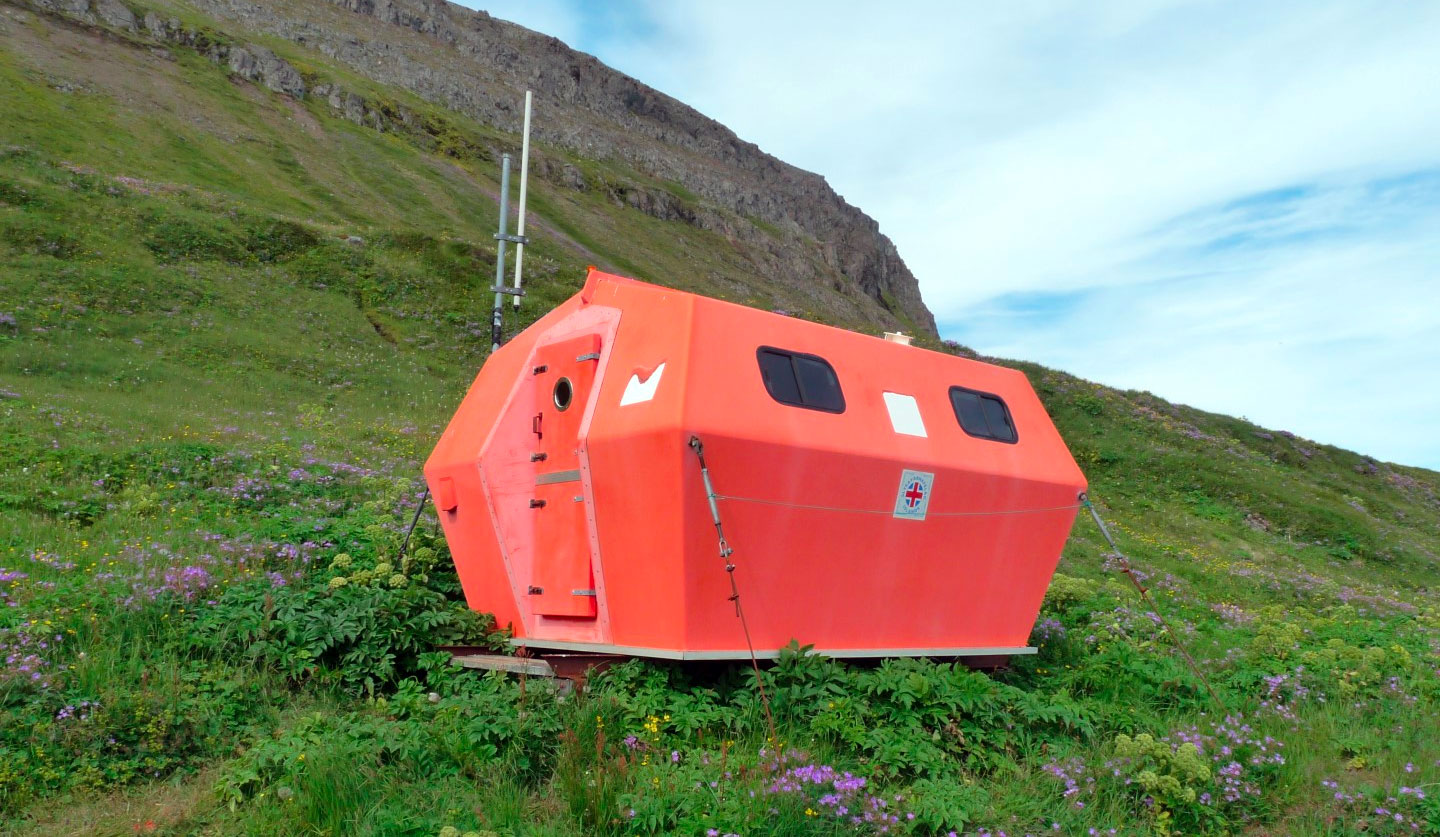
Dry toilets
Another special feature of Hornstrandir nature reserve is that dry toilets have been built at each camp. Wherever possible, you should use these toilets for your own needs. Their main purpose is to protect local flora from trampling.
The low number of visitors means you can even use them with the door open to enjoy the scenery! (It’s even a local joke: how do you know if the toilets are occupied ? when the door is open!)
To sum up, camping at Hornstrandir means carrying all your hiking gear, food and a minimum of safety equipment (like a first-aid kit). You’ll need to be trained to carry more than 12kg (and up to 20kg, depending on the length of your stay) on difficult routes. If, in addition to this equipment, you need to carry photo/video gear, then serious preparation of your backpack and your physical condition is essential!
Necessary equipment
Here’s a non-exhaustive list of the equipment you’ll need for hiking in Hornstrandir:
- A three-season tent, I recommend the MT900 Ultralight from Décathlon, a very good value for money tent that I used in the reserve from June to October.
- A light inflatable mattress (minimum 7cm)
- A sleeping bag designed for sub-zero temperatures. Depending on your budget, I recommend the Valandre La Fayette (very compact and lightweight) or the Makalu ll from Décathlon. Important point: the sleeping bag must always be stored in a dry bag!
- Two dry bags: one for the sleeping bag, and a second for clothes, toiletries, notebooks, etc.
- A toiletry kit: toothbrush, toothpaste, toilet paper, soap, sun cream and possibly Vaseline to limit the evaporation of water on the skin (if you have sensitive skin and to relieve irritation). Avoid unnecessary accessories, such as tissues (one hand on one nostril, and a blow on the other will do the trick and avoid extra waste).
- A first-aid kit: disinfectant, compresses, patches for blisters, ibuprofen (or another painkiller and anti-inflammatory), a needle, tweezers may also be useful…
- Thin, warm clothing: opt for thin layers of merino wool before finishing with a thicker fleece and a waterproof windbreaker. For bottoms, silk or fleece leggings and hiking troussers. Finally, accessories such as a choker, hat and gloves are a must.
- Kitchen equipment: a stove, two gas cylinders and basic utensils.
- A water bottle: drinking water is available throughout the Hornstrandir reserve, and there’s no shortage of watering holes. 800ml bottle is all you need.
- Powerbank battery and solar panel: to ensure your electricity autonomy, one or two Powerbanks – I recommend Samsung 20AH – and a foldable solar panel like the BigBlue 28W, which lets you recharge your phone and camera.
The complete equipment for an autonomous trek is available on our “What equipment for an self-sufficient trek?” page.
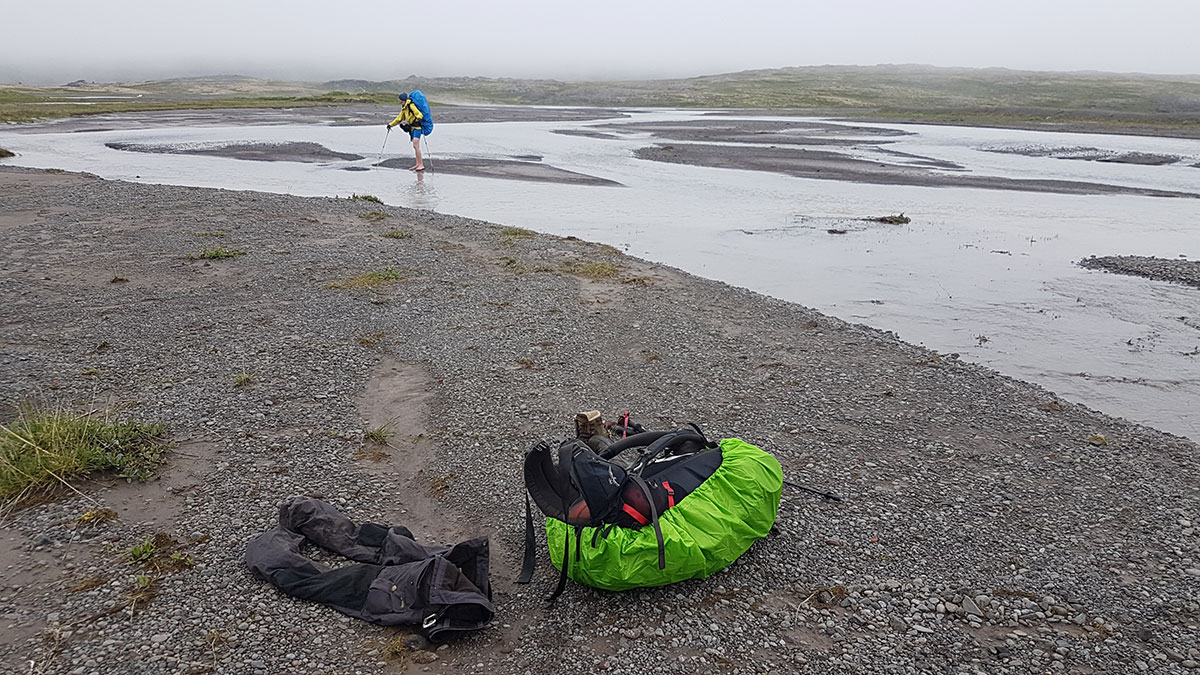
What to eat on your trek to Hornstrandir ? food list
It’s not easy to know what your dietary needs are until you’ve experienced hiking on your own. The diet you choose depends on the energy you need, how often you eat and your digestive system. After a few days, you run the risk of losing your intestinal flora, particularly due to the lack of fiber. We can, however, draw up a general list of foods for the Hornstrandir reserve, which you can then adapt.
Non-exhaustive list of foods for a 12-day self-sufficient trek to Hornstrandir:
For meals
- Oat (800g): for breakfast, oats can be combined with raisins, cashew nuts and cinnamon for a tummy-friendly meal! To prepare, simply boil water, stir and wait 2 minutes.
- Couscous (1kg): for lunch, combined with dates and/or dried apricots, peanuts, spices and olive oil. To prepare, add the volume of seed at the top, stir and wait 5 minutes.
- Peanuts (500g): rich in protein, iron, magnesium and potassium.
- Cashew nuts (250g): for vitamins B1 and B2, important for energy.
- Dates (500g): rich in vitamins, they’re THE fruit that’s easy to transport and eat.
- Raisins (500g): also rich in vitamins, especially calcium!
- Dried apricots (250g): rich in vitamins, they give you energy and can even be eaten during intense effort.
- Freeze-dried soups (24): For the evening, after boiling water, add two soups and a handful of oats.
- Spices: I recommend turmeric, ginger, coriander and black pepper (all in powder form) for the couscous, cinnamon for the prodigy, and salt of course.
- Olive oil (500ml): the list of benefits of olive oil is long, but it will be your main source of omega 6 and omega 3.
Snacks
- Cereal bars: for protein, but especially for fibre!
- Marzipan (almond paste) : for both protein (in small quantities) and sugar
- Protein bars: you risk losing a lot of weight, so you might as well build muscle.
- Chocolate: for magnesium and vitamin B6, which helps assimilate it.
You need about 2kg of snacks for 12 days.
Safety rules in the Hornstrandir reserve
Venturing into the Hornstrandir nature reserve is no ordinary hike, and you’ll need to respect certain safety rules to avoid risky situations.
First and foremost, campfires are strictly forbidden in Hornstrandir, as elsewhere in Iceland. This is understandable, given the scarcity of wood on the island.
Effort management
The first piece of advice I can give you is to manage your energy properly. You should never be completely exhausted. Keeping your energy up means that, in an emergency, you’ll be able to go a few extra miles.
I’ve done 17km in the reserve (which for me is equivalent to 30km in the Alps), and then had to do another 10km at the end of the day to deal with an emergency.
Managing your energy implies both serious preparation for good physical condition, and a regular and complete diet during your stay. If you’re at the end of your rope, you’re taking a risk (especially in the event of an accident).
Adapted equipment
As I said earlier, the terrain you’ll be riding in is very difficult. You’ll have to cross rivers, negotiate steep, slippery passages, get close to the ocean – in short, when it comes to accidents, there’s no shortage of reasons!
In these conditions, you need to be well-equipped. I strongly recommend that you travel with your hiking poles. Personally, when I’m working on the reserve as a guide, I refuse to accept anyone who doesn’t have their hiking poles with them.
You must also have fully waterproof clothing (jacket, overtrousers and shoes).
As far as hiking boots are concerned, I’ve tried different categories and only BC boots (somewhere between mountain hiking and mountaineering) are suitable for the reserve. The terrain is so rugged that it’s impossible to secure every step.
Watch out for the cliffs!
You’ve probably seen pictures of the impressive Hornvík cliffs. During your hike in the Hornstrandir nature reserve, you’ll be able to walk along these cliffs and enjoy the incredible panorama. But be careful not to get too close to the edge. Strips of grassy soil sometimes protrude from the rocky cliffs, and these can break away under your weight. So it’s best to avoid standing on the edge. Instead, keep a safe distance, or approach on your stomach.
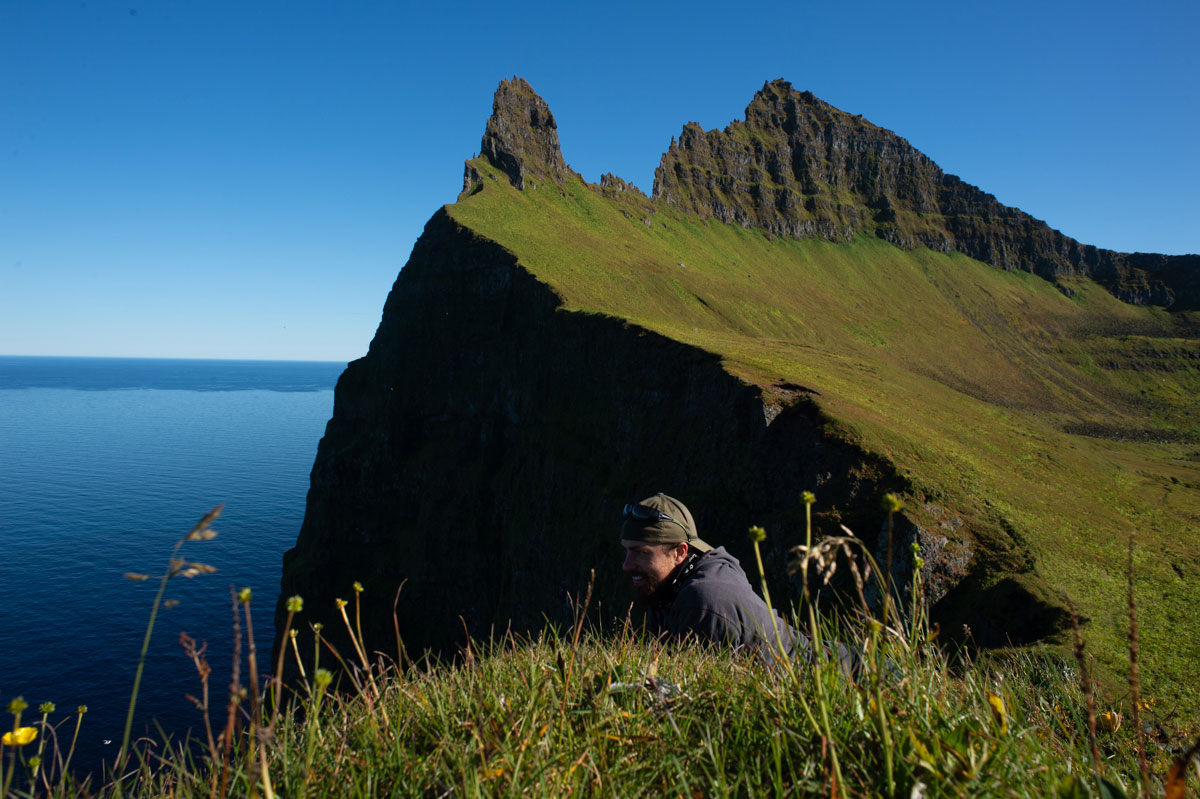
Always sleep dry!
In the Hornstrandir reserve, the most important thing is to stay dry. But that’s not always possible. Two days of rain and you’re soaked to the skin. There’s one rule you’ve got to stick to: make sure you always sleep dry! To do this, pack a waterproof bag in which you keep your sleeping bag, a night outfit: warm leggings, a pair of merino socks, a merino under-sweater, a hat and a pair of gloves. If you stick to this rule, you’ll never have to worry about the cold again – you’ll always have something to keep you warm.
Send your itinerary to a friend
In the event of an accident, help must find you as quickly as possible, as the main danger to you is hypothermia. To increase your chances of being found quickly, you can send your itinerary to someone you trust, ideally a day-by-day itinerary. With this document, rescuers will know in which part of the reserve to search. The emergency number in Iceland is 112.
A satellite communication system
If you go hiking in the Hornstrandir reserve in early September, the ferry companies will automatically fit you with a personal locator beacon (PLB). But this is not the case in summer. You must ensure your own safety. A satellite system is not essential in summer, but depending on your situation and experience, you may opt for this extra equipment. In this case, I recommend the Garmin inReach® Mini 2, which you can connect to your smartphone.
With such a system, you’ll be able to send an SOS, even in the absence of a mobile network.
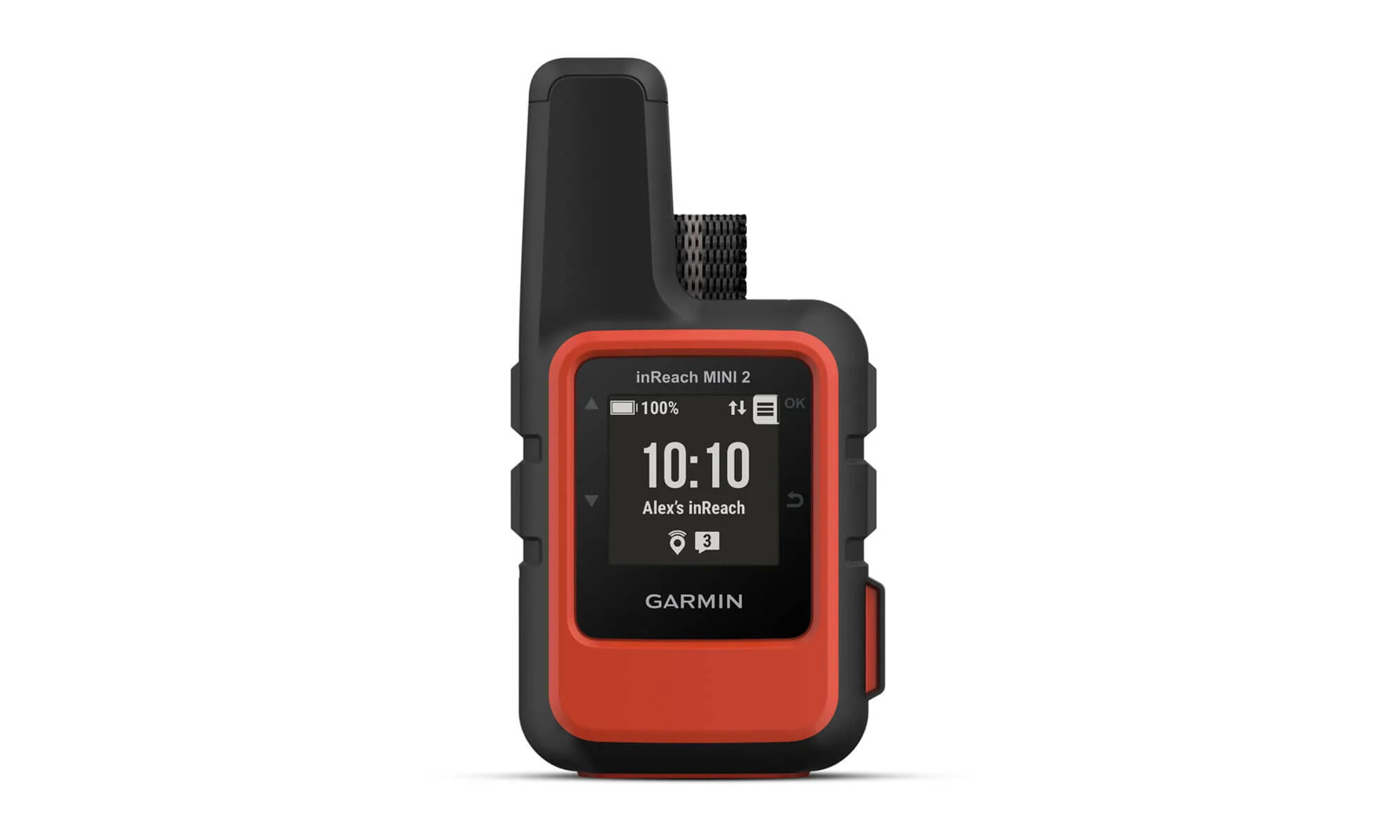
Hornstrandir’s wildlife
Arctic foxes
The Icelandic arctic fox is king of Hornstrandir nature reserve. And Hornvik is the most densely fox-populated region in the world.
Icelandic arctic foxes are unique in that most of them are brown. Throughout the Arctic, white foxes dominate. But in Iceland, the dark environment of the basaltic rock has favored the brown color.
Arctic foxes arrived in Iceland during the last ice age, via the pack ice. When this period came to an end, some 11,700 years ago, these little canines were left stranded on the island. That said, given the abundance of food (seabirds, crustaceans, fish…) and the absence of natural predators (apart from man), Iceland has long been a paradise on earth for foxes.
Hornstrandir is certainly the easiest place to observe arctic foxes. In some parts of the reserve, the foxes are not shy; they can approach to within a few meters, and even show a desire to play. Needless to say, it is strictly forbidden to feed them. You should even limit your interaction with them. Don’t forget, these are free, wild animals!
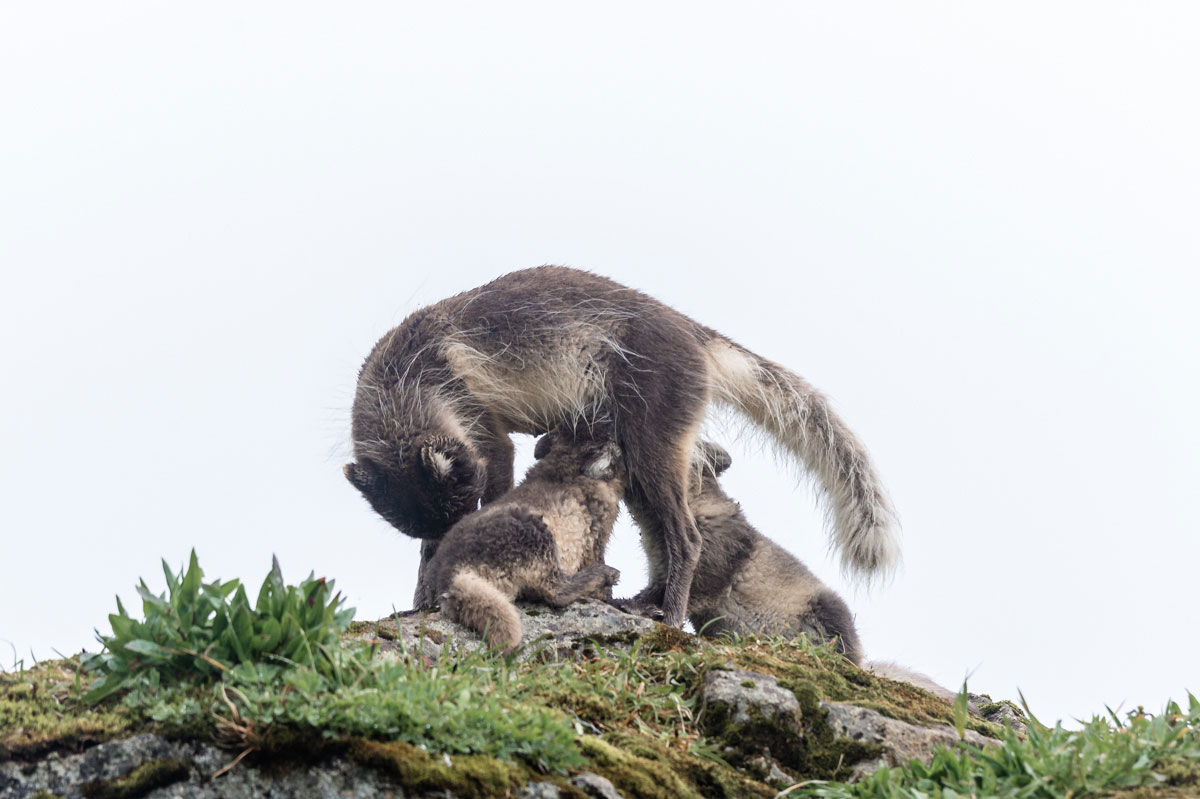
I spent a lot of time cataloguing and observing arctic fox dens in Hornstrandir. What a wonderful experience to be able to watch the cubs learning, feeding and interacting with each other. I can tell you that, even when the foxes appear to be shy, the presence of humans can cause a disturbance. For example, it’s not uncommon to see them change their course because of a human presence. So avoid getting too close to them, or standing in their path. Instead, observe them from a distance, away from their path.
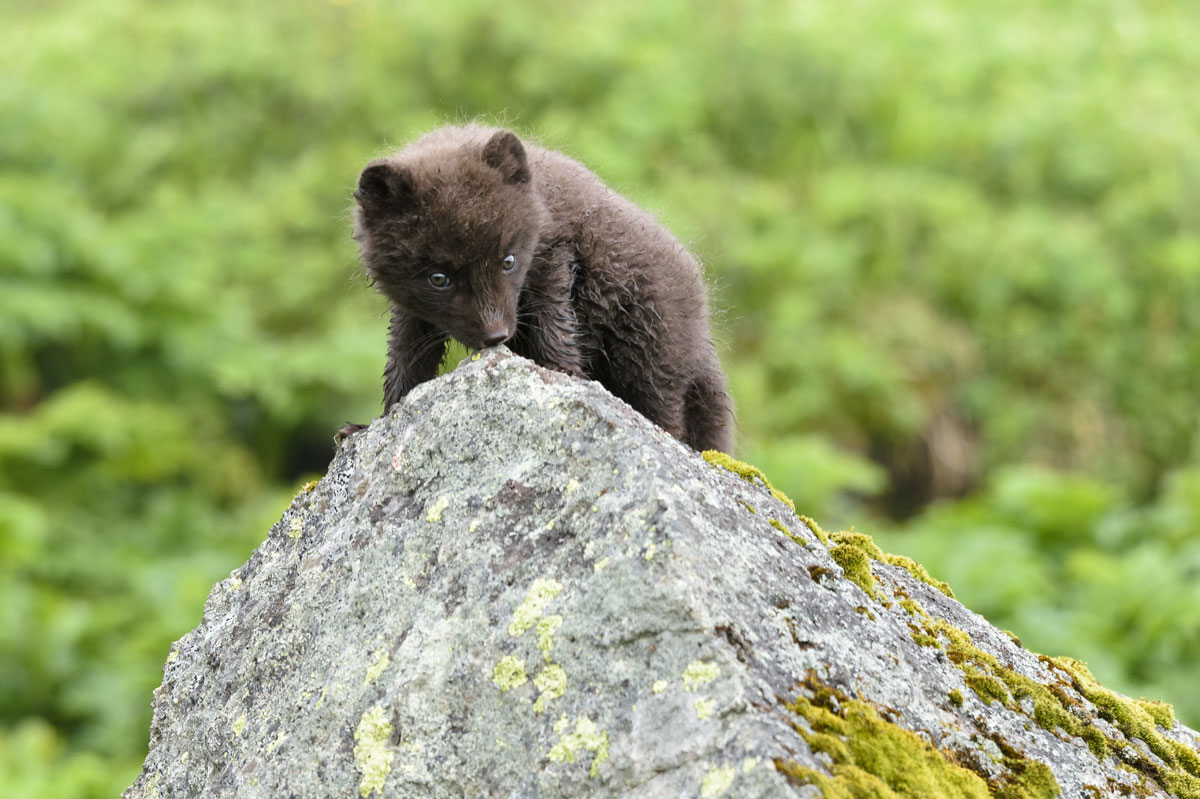
Seabirds
The cliffs of Hornstrandir nature reserve are home to millions of seabirds. If you’re an ornithologist, or simply a bird-watching enthusiast, then you’ve come to the right place!
Fulmars, common murres, red-throated loons, red-necked phalarope, common snipe, golden plover, eiders, harlequin ducks and purple sandpipers are all common in the reserve. It’s even common to spot the majestic white-tailed eagle or the rare gyrfalcon.
If in addition to observing you want to photograph the birds of Hornstrandir, then I recommend that you equip yourself with a 600mm lens. While certain species such as red-necked phalarope or purple sandpipers can be photographed with a smartphone because they are not very shy, other species such as the white-tailed eagle or different species of ducks are more difficult to approach.
During the day, birds are active and noisy. But during the night (a very bright night…), calm sets in and the birds find a place to rest. These moments of low light and calm are ideal for photography or video, or even for observing birds in intimate conditions. Be careful, however, to respect this privacy and keep your distance. For this, a pair of binoculars is essential.
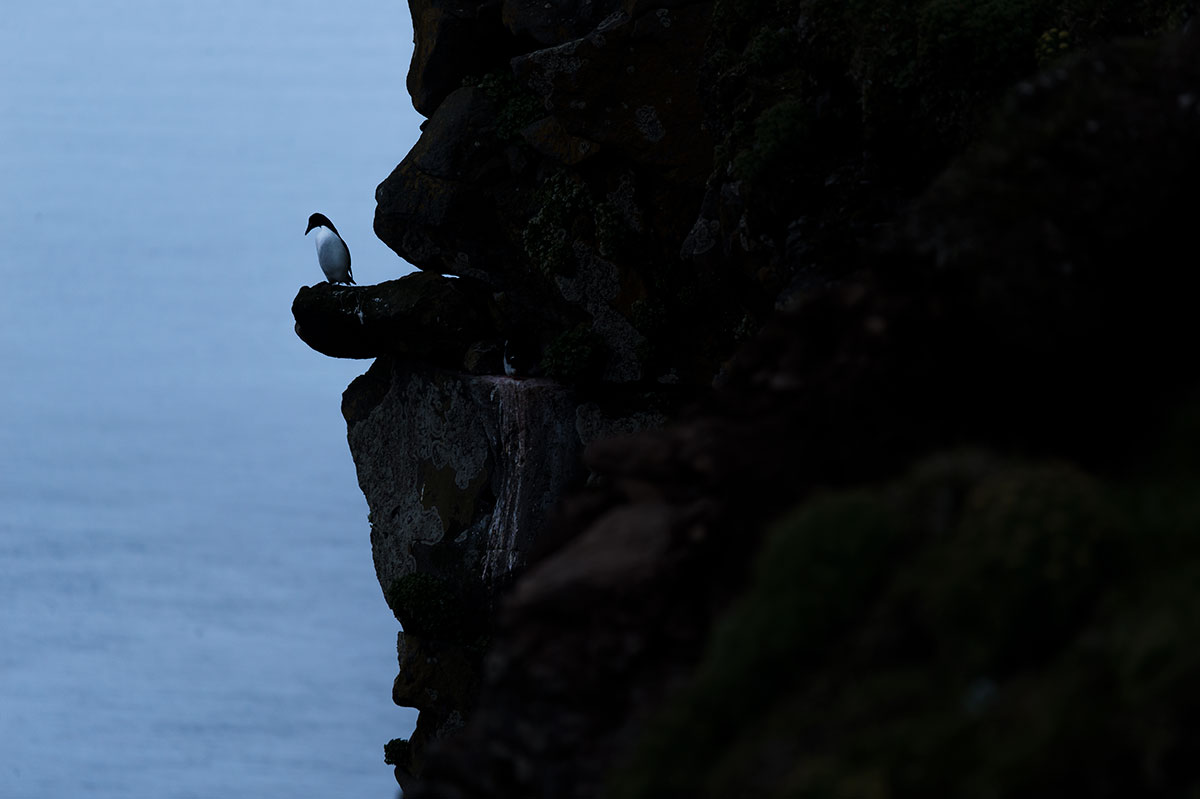
For bird watching in Hornstrandir, the best time is from the end of June to the end of July. Some species leave the land as early as August.
Finally, unfortunately puffins are not present in Hornstrandir nature reserve. The high population of arctic foxes prevents these birds, which nest on the ground and are therefore easy prey, from establishing themselves in the region. For puffins, favor the Látrabjarg cliffs further south.
Marine mammals
As I wrote above, to get to Hornstrandir, you have to take a ferry. A crossing that lasts between 30 minutes and 1h30 awaits you. This is the opportunity for you to discover the North Atlantic (or rather the Greenland Sea to be more precise) and its wildlife.
I have made this crossing dozens of times, in good and bad conditions, and the marine mammals that I have observed most often are two species of whale: the humpback whale and the Minke whale. This latter species being quite shy, observations are often brief. On the other hand, humpback whales occupy areas over several days and it’s generally possible to observe them in good conditions.
Important information: Whale watching in Iceland is much more difficult when the ocean is rough. If this is a goal for you, then book your ferry on a day of clear blue skies and calm seas.
In addition to whales, you can come across harbor seals in the reserve. The best place to observe them is in the Hesteyri Fjord. All you have to do is walk along the fjord towards the old whaling station to come across them, lounging on the rocks at low tide.
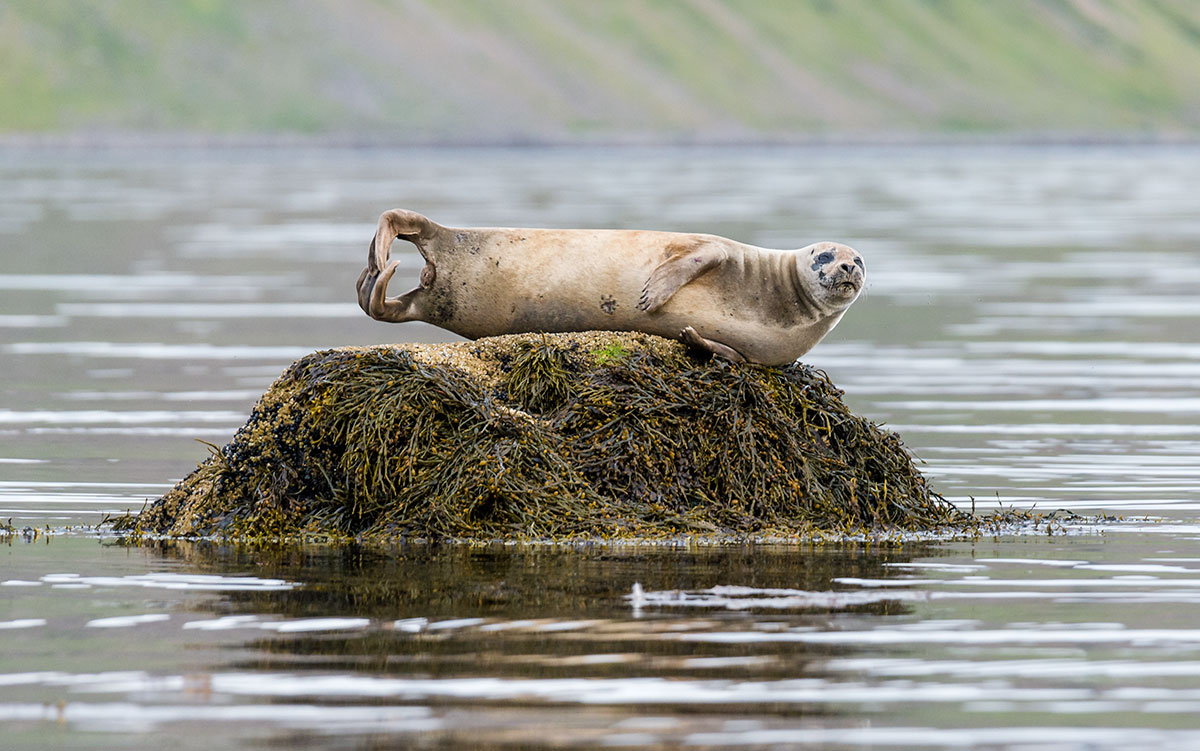
The ghosts of Hesteyri
A few years ago Yrsa Sigurdardottir published the novel “I remember you” (“Ég man þig” in Icelandic), adapted for the cinema in 2017.
I won’t spoil it here, but I can nevertheless tell you that the story takes place in the Hesteyri Fjord, where a young couple embarks on renovating a holiday home, before realizing that they are not alone on the scene. A suicide in Ísafjörður, a child who disappeared three years earlier and strange voices in the Hesteyri cemetery are the ingredients of this thriller.
Since Hesteyri Cemetery is located exactly where the camp is, it may be best to read the book after visiting Hornstrandir, unless you really like being scared!
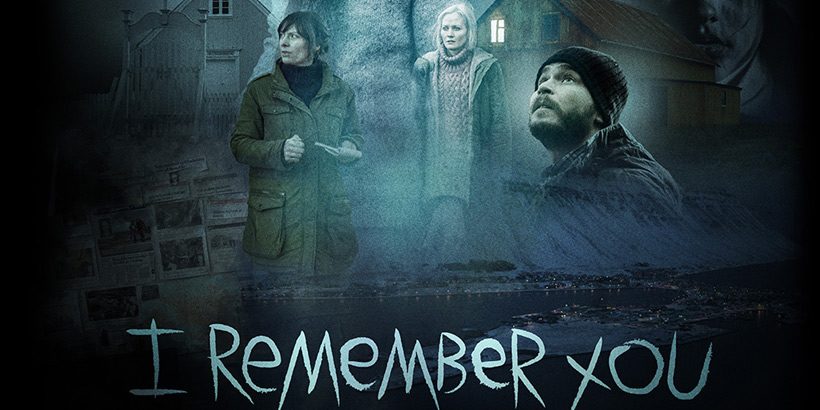
Conclusion
Hornstrandir nature reserve is one of the most beautiful places I have ever visited. Nature there is wild, majestic, but also harsh and implacable. Its geographical position makes it a refuge for millions of animals, birds and mammals, in the heart of the North Atlantic.
I had the chance to spend time there for a photography project, before becoming a hiking guide and photo guide in the Westfjords. It was my greatest naturalist experience.
The advice I give you here is based on my experience in the region.
If you are planning to go to Hornstrandir Reserve, and you have read this article, then you should already know if you can do it alone, or if a guided trip is better for you.
If you liked this post, and if you want to, you can share it on your social networks. It’s thanks to sharing that our blog gains popularity. Thanks in advance ! 🙂


